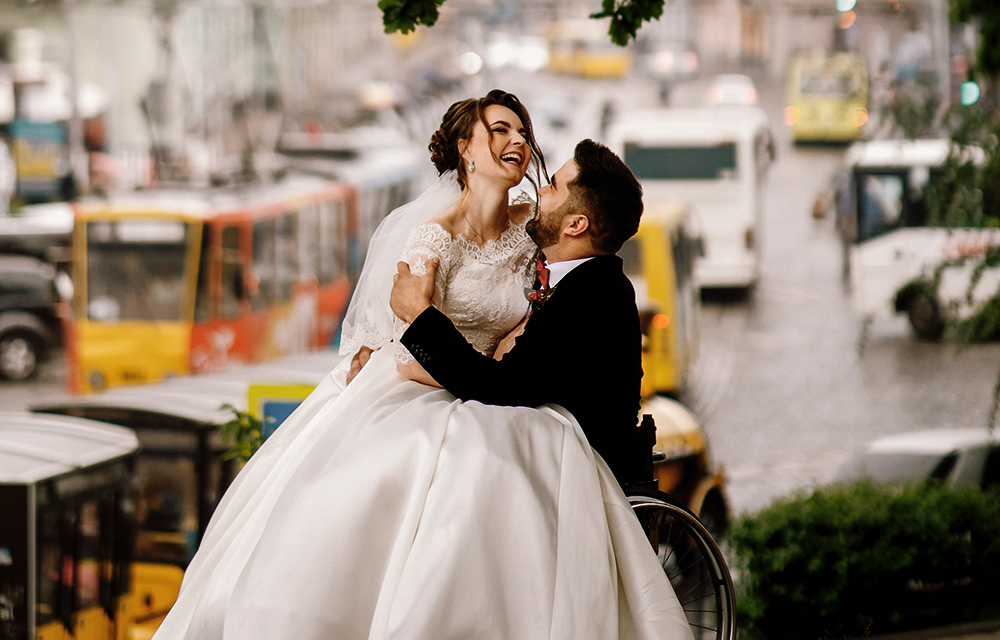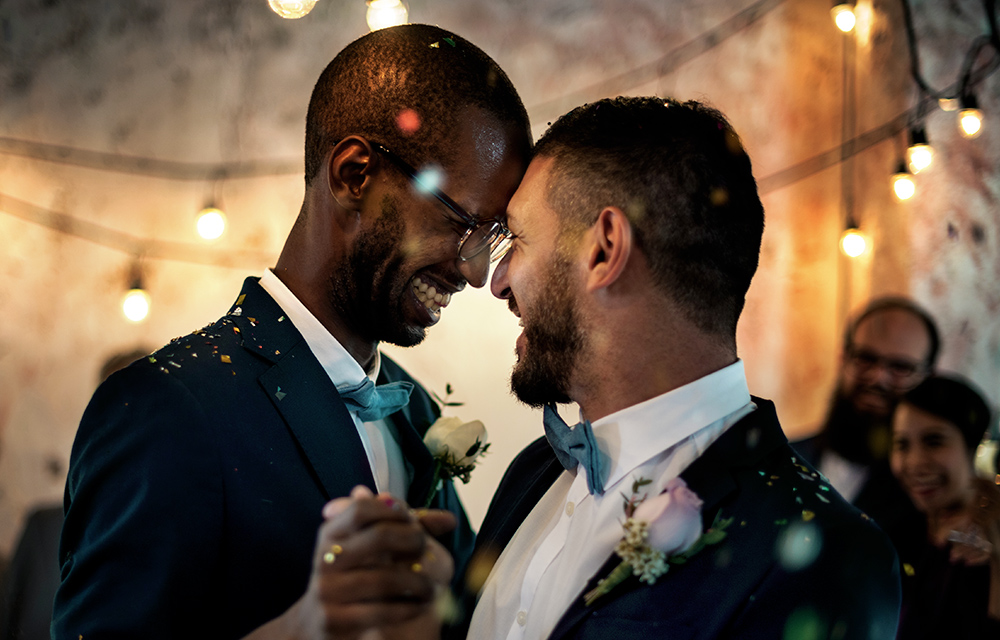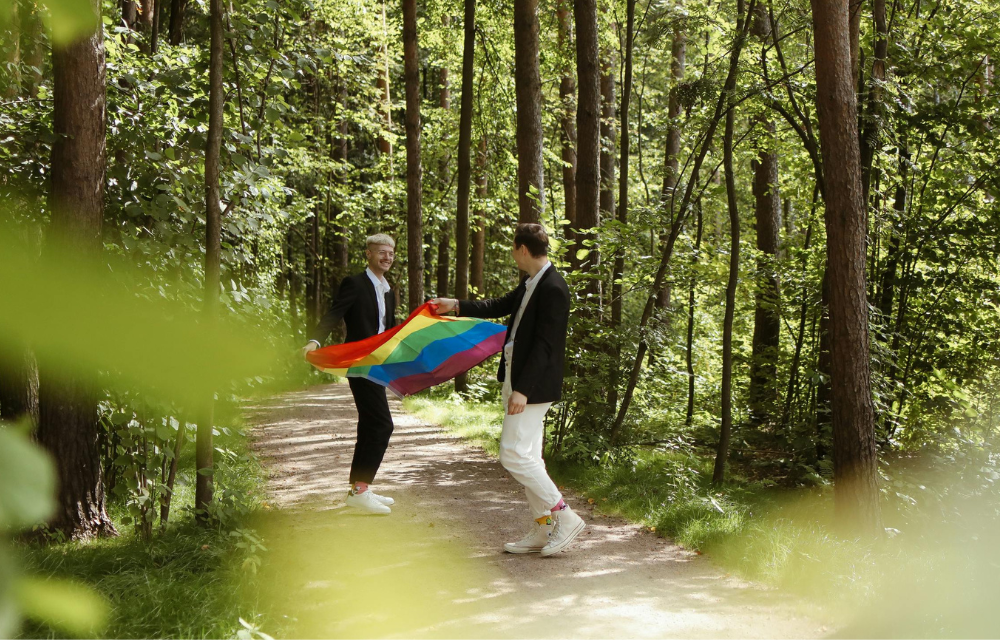Simply put, marketing solves a problem for consumers by connecting them with products and services. It sure sounds easy, but effective marketing isn’t a one-size-fits-all undertaking. Chances are, most people within your target audience have something unique about them that makes them different, whether it be related to race, ethnicity, gender, sexual identity, or physical ability. Inclusive marketing today isn’t “outside the box;” rather, it reflects the world around us.
For wedding venues, focusing on a narrow demographic not only limits your messaging, but can also drive potential clients to competitors who are getting inclusivity right in their wedding venue marketing. In this blog post, we explore what inclusivity is, why it’s important, and the steps you can take to ensure your marketing message resonates with people from all backgrounds.

Respect: Don’t Assume Couples Want Traditional
Inclusivity is more than diversity. Inclusive marketing expands messaging in a way that enables underrepresented groups to fully experience and connect with your brand. As a wedding venue, you’re already adept at finding ways to make each wedding unique by personalizing it to the individual couple, so it’s really just a matter of expanding on that.
In 2015, the US Supreme Court struck down the ban on same-sex marriage, legalizing it in all 50 states. Because there wasn’t an established playbook, it gave gay and lesbian couples the opportunity to write their own rules and develop meaningful expressions of the wedding ritual rather than simply falling in line with expectations and traditions.
If you approach every wedding (and every couple) with an open mind, without assumptions based on previous experience, you will open the door to inclusivity, regardless of whether the couple fits neatly into an existing box.
Reimagine: Learn about the Couple & Let That Shape the Event
Think back to the first time you hosted a wedding for a blended family — that is, a couple who had children from a prior marriage, or stepparents (some of whom may not have been on the best of terms with one another). It probably required some creative problem-solving to make things work logistically for the couple, without alienating anyone in the process. No one knows the ins and outs of weddings like you do, and couples of all stripes are relying on you to anticipate any issues that might arise.
Many couples, for example, have eschewed the long-standing ceremony tradition of seating their families and friends on opposite sides of the aisle, opting instead for open seating. Similarly, the tradition of the couple seeing each other for the first time at the altar has largely been supplanted by a “first look” — an intimate moment shared between partners in a private setting that can help mitigate wedding jitters, allowing the couple to be more present at the ceremony.
Instead of trying to fit the couple into a set of predetermined roles and rules, take the time to find out more about them as people and let the event shape itself. It’s okay to ask questions! Find out what’s important to them, how they see their celebration unfolding, and what makes them different from other couples you may have served.

Represent: Walk the Talk in Your Offerings & Marketing
A New Perspective
Wedding preparation can take many forms. Challenge the assumption that brides want a space equipped with lighted mirrors and stylist’s chairs to spend the morning primping and preening while grooms smoke cigars, play video games, and drink beer. Gender-neutral accommodations for wedding preparation with similar amenities allow couples to choose the environment that makes sense for them.
Gender-Neutral Pronouns
As more and more consumers are abstaining from labels, it’s important to seek out gender-neutral pronouns to avoid alienating the very consumers you’re trying to attract to your venue. Don’t underestimate the importance of pronouns as tools for affirming gender identity. Using the plural (they) in place of the singular (he/her) across your marketing materials can clearly signal to potential couples that your venue is a welcoming and inclusive environment.
Inclusive Language
So much of “traditional” wedding terminology is highly gendered, from “Best Man” and “Maid of Honor” to using titles like “Mr. and Mrs” on all wedding stationery. Here’s a short list of terms and some acceptable alternatives you might consider incorporating into your media efforts. (Don’t forget to check the verbiage on your website contact form and any contracts that use exclusive language.)
Instead of bridal party…try wedding party
Instead of bridal suite…try dressing room, hospitality suite/lounge
Instead of bride and groom (singular)…try brides and grooms (plural)
Instead of husband/wife…try partner, spouse, beloved
Instead of bridesmaid/groomsman…try attendant
Instead of Best Man/Maid of Honor…try Person of Honor
Instead of Mr. and Mrs….use full names instead
Highlight Real Stories
One of the best ways to help potential couples envision their nuptials at your venue is through the visuals on your website, blog, and social media channels — so it’s crucial that these photos represent real people of varied backgrounds. When selecting the imagery you use in your marketing materials, ask yourself: Do these visuals represent couples of different ages, ethnicities, and body types? Are we regularly showcasing same-sex weddings and LGBTQIA+ ceremonies?
With 70% of Millennials and Gen Z more likely to support a brand dedicated to diversity and inclusion, the importance of highlighting your venue’s inclusive values cannot be overlooked. Don’t be overwhelmed by the idea that you need to include everyone in your marketing initiatives — instead, be mindful of excluding a particular group.
You may also consider the option of “holding space” in your marketing photography by highlighting your venue and its unique celebration spaces without an overt focus on people. This leaves room for interpretation among potential clients, making it easier for them to visualize what their own wedding might look like.
Use Commonalities to Unite
Fortunately, you needn’t look far to find a common thread among your existing and potential customers: They’re visiting your website or scrolling through your social media accounts because they’re getting married, and they’re considering your venue to host their celebration. Focus on the things that unite your clientele rather than what separates them: They’re simply two people committing their lives to one another before their community of family and friends.

Review: Step Back, Survey, and Assess Your Sincerity
In order to resonate with existing and prospective clients, an inclusivity initiative needs to emanate from the very core of your brand — it can’t be a gimmick or appear to be rooted in financial gain. Couples seeking inclusivity in their venue selection will be able to see right through any halfhearted attempts to elevate your social sensitivity score, so it has to be woven into your corporate DNA.
Start by taking a hard look at your wedding venue branding. You might even consider performing an inclusion audit to assess the messages your venue sends, surveying employees from different departments for fresh perspectives. You’ll not only reap the benefits of appealing to a wider audience, but you’ll attract and retain the best and brightest talent and experience higher employee engagement — all of which position your venue for continued success.


